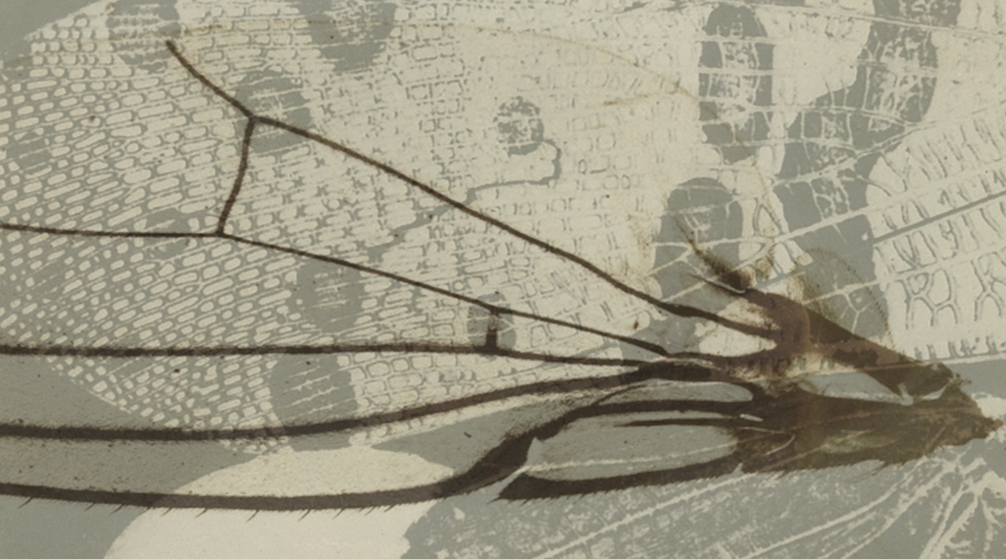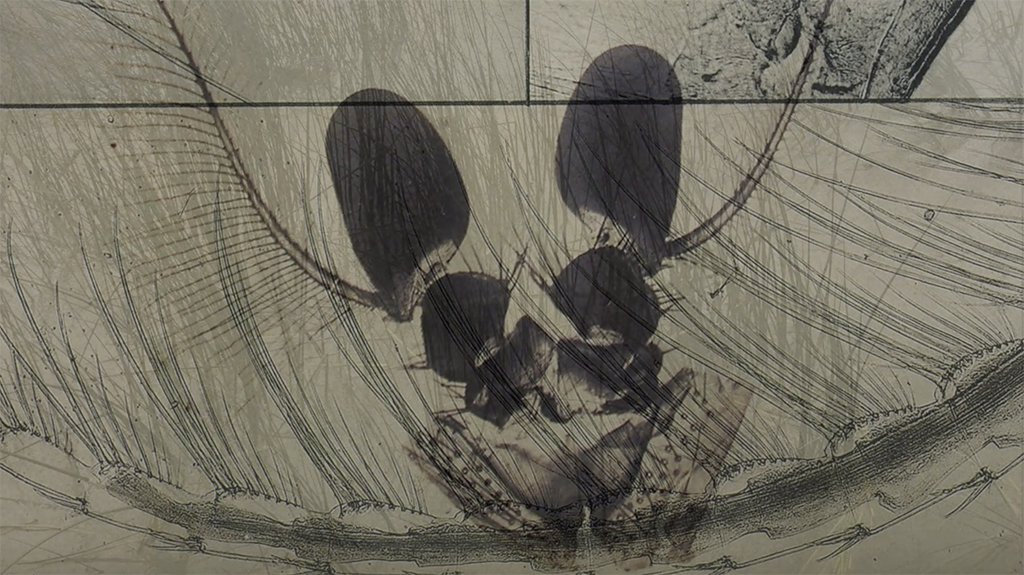Maddalena Parise, visual artist and researcher
Il filo dell’arazzo, 2020
Maddalena Parise projects involve both research and creation of visual tools.
Il filo dell’arazzo is an immersive and multilayered installation made out of diverse visual and sound devices: light boxes, slides, tracing papers, video projections, small sound amplifiers or earphones. The installation-atlas is a guide through the complex issue of extinction focusing on the mass ‘rarefaction’ that is affecting the entomological world. The project takes into account scientific illustrations, especially those reproducing insects’ shapes and their migrations. At the cross road between science and art, the installation focus on insects’ image/photography: the act of enlarging, freezing part of them in reproductions, makes those minuscules being finally visible. As much as the insects, these photographs/images/forms are part of an ecosystem; they ‘mutate’ and cross mimesis boundary; thanks to a montage ruled by analogy, closeness and affinity they end up referring to something new not related to the original reproduction: they show both their and the insects relation to the Universe. The project is based on image-document, on a sequence of microscopic photography selected from various archives no matter the time span during which they were made. The result will be a new ‘peculiar’ archive made out of entomological elements together with landscape, maps, geographical images.
On which fields of knowledge are you focused?
In my artistic practice theater, installations, multidisciplinary projects.
What is the object of your research?
Within my research on art and history I have focused in portraiture, particularly on daguerreotype portraits. Lately I have been mainly active in conceiving multimedia installations and in turning original scripts and theater plays into visual narratives.
Could you identify some constants in your work?
My research focus on specific visual devices such as: detailed microscope images, charts and maps, private and family memories, family photographs and family photos, scientific archives, portraiture, adapting text to images.
How did you find out about Aby Warburg’s work? What interests you the most?
I did approach Warburg’s writings at University. During my BA at La Sapienza, Rome, I took a course on Iconology and Iconography and graduated with a research on Erwin Panofsky’s lecture on movies (1936/1947). I then undertook a PhD research project in France, during which I deepened my knowledge of Warburg and scholar tradition that came out of his Library. I became most interested in his Mnemosyne BilderAtlas and in the library’ structure.
How would you define an Atlas?
As a device that allows one to trace, as if in front of a wide map, migrations and mutations of images. These wanderings and hidings are not diachronic but are ‘edited’ according to a vertical system. The meaning and true essence of these images outlives History, by colonizing new objects which might seem extremely alien to the original ones.
Atlas as a conceptual, formal and mnemonic device; do you use it in your work?
I have my own inner Atlas, which I built using mere mnemonic associations; it widens up as a response to ongoing projects; for my researches I use books, art catalogues, the WEB, movies, private archives and museum visits, as I recall them in time. I also have an external and digital archive ordered by topics; these are potentially enlarged by new materials collected according to my own associations.
Do you know about the existence of Mnemotechnics?
Yes, although it has never been a research’ topic.
Which mnemonic system guides the organization of your material?
Associative intuitions rule my mnemonic system which is feed by the re-activation of private memories, books or WEB research.
Are there visual and emotional formulas (pathosformeln) in your project?
Yes. I work on detailed frontal view portraiture (from Van Eyck to Thomas Ruff), identity cards, microorganism’s images, geographical maps and charts, city’s glimpses, trees, rivers.
In your work, do you identify formal or conceptual recurrences such as repetitions and disruption, distance and proximity, identity and migration, conflict and colonization?
I work on external form repetitions both in details and in overall views, and on migratory motions; I have developed a particular attention to details, for images composition and undoings, for analogues proximities.
In your work, what is the balance between image and text?
The starting point of any project is a text or an original script which act as a propelling force; I then let images to move freely within given rules, although their main narrative is within the text or the overall structure of the work. Very seldom – as in Il filo dell’arazzo – a project spreads out directly from images; I then build it up with research and readings.
Thinking about Warburg’s ‘good neighborhood rule’, what are the books that underpin your project?
Daniel Arasse, Le détail. Pour une histoire rapprochée de la peinture, Flammarion 1992
Jonathan Crary, Suspention of Perception. Attention, Spectacle, and Modern Culture, 1999
Lorraine Daston, Peter Galison, Objectivité, Presses du Réel 2012 (ed. or. Zone Books 2007)
Ludger Derenthal e Christiane Stahl, MikroFotografie / Schönheit Jenseits des Sictbaren, Kunstbibliothek Staatliche Museen zu Berlin, 2011
Beauty of Another Order. Photography in Science, cat. della mostra, National Gallery of Canada, Ottawa, 1997
Georges Didi Huberman, Phalènes. Essais sur l’apparition 2, Ed. Minuit, 2013
Ejzenstejn Sergej M., Teoria generale del montaggio, a cura di P. Montani, Marsilio 1985
Jean-Henri Fabre, Le meraviglie dell’istinto negli insetti, Armando editore, 2007 (ed. or. Ch. Delagrave, 1913)
Massimo Sandal, La malinconia del mammut. Specie estinte e come riportarle in vita, Il Saggiatore, 2019
Clifford Simak, Anni senza fine, Ed. Nord 2005 (ed. or. 1952)
Maddalena Parise gained a PhD in Art philosophy (Paris, EHESS-La Sorbonne) with a research project on composition and identity of photo portraiture (published in Fink Verlag, Images re-vues). She co – authored L’œil photographique de Daniel Arasse. Théories et pratiques d’un regard (2012). In her artist practice she works with installations and videos, both for theater pieces and site-specific projects; she is part of the collective lacasadargilla, founded in 2011 together with L. Ferlazzo Natoli, A. Palazzi, A. Ferroni. Among her/lacasadargilla projects the installation Slides, ritagli del tempo; original video design of the following shows: Il libro delle domande, Ascesa e rovina della città di Mahagonny, When the Rain Stops Falling by Andrew Bovell. She co curated multidisciplinary projects such as Linee di confine and IF/Invasioni (dal) Futuro and the installation-performance Art you Lost? (lacasadargilla, Muta Imago, Santasangre). She co-authored the visual projection for Les Adieux! Parole salvate dalle fiamme. She is author of the visual project of La materia oscura. Perdendo Ettore Majorana.

